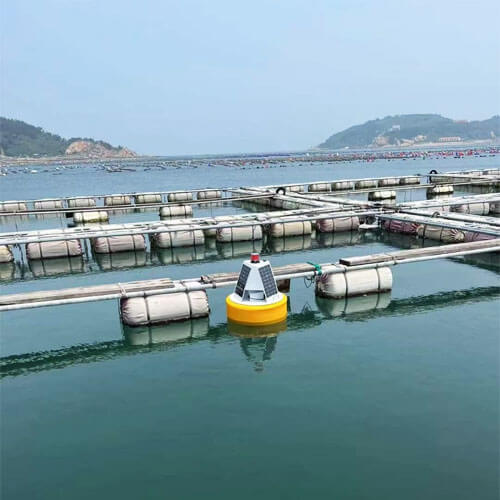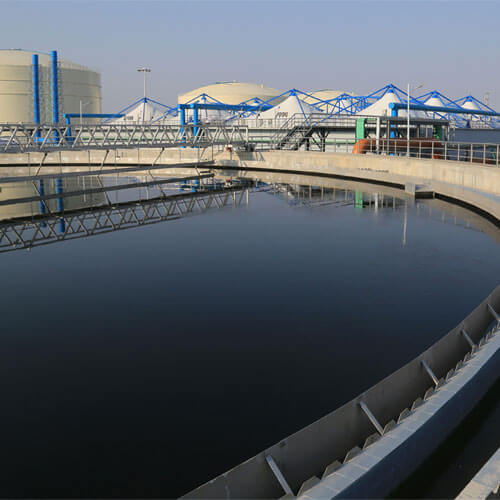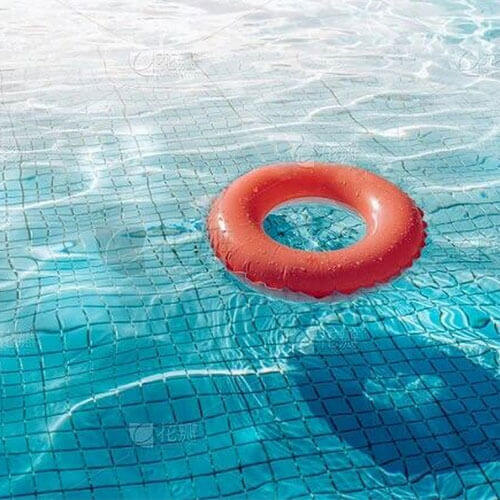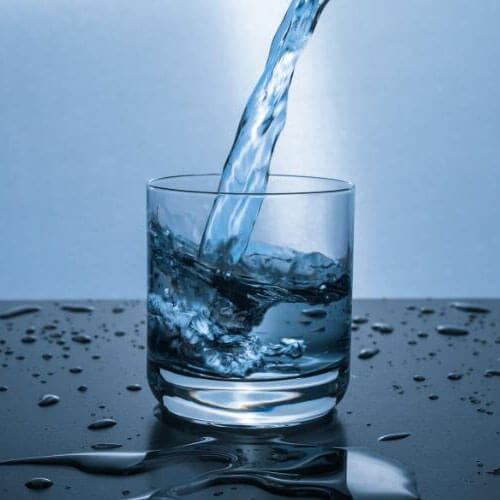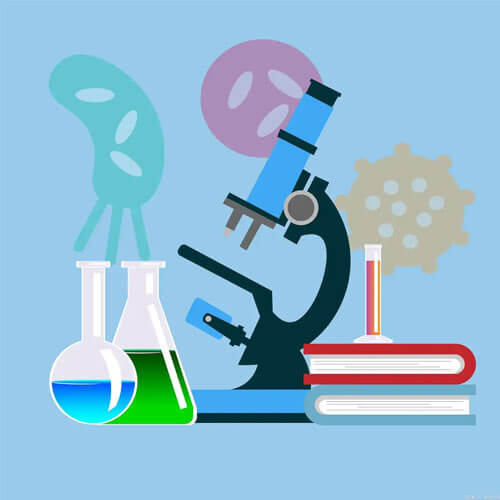The Internet of Things (IoT) is one of the hottest technology words in the past few years, which can collect, share, analyze and create value from data. However, without accurate data, IoT will become a useless technology. Therefore, the relationship between IoT and IoT sensors and actuators is complementary.
IoT consists of several technology layers that enable ordinary things to share the data they collect on the Internet, thereby providing intelligence, autonomous actions and value that depends on the quality of the data itself. Therefore, sensors and actuators are an important part of IoT technology and a key factor in every IoT system.

What are IoT sensors and actuators?
IoT sensors, also known as IoT transducers. Its function is to monitor events or changes in the surrounding environment and convert these physical phenomena (such as temperature, light, air humidity, movement, the presence of chemicals, etc.) into electrical impulses. This can then be interpreted meaningfully.
IoT actuators, in simple terms, are “movers”. An actuator can be seen as a tool that acts in the opposite way to a sensor. It mainly converts electrical impulses sent from a control system into mechanical motion, thereby affecting changes in the physical world through various simple actions. (Including but not limited to opening and closing valves, changing the position or angle of other devices, activating them or emitting sound or light, etc).
Ordinary electrical sensors and actuators have been around for decades and are ubiquitous in modern industrial applications. But the advent of the Internet of Things has opened up entirely new possibilities for the application of IoT sensors and actuators, not only in the commercial sector, but also in the industrial sector. As an essential component of the Internet of Things, sensors and actuators help monitor, control, and simplify operations in almost all areas, from smart cars to rainforest protection. The Internet of Things has completely changed the way they are applied and expanded their scope, allowing sensors to be used in cloud-based analytical software to develop solutions for machines, people, and the environment.
Reliable IoT sensors and actuators are the foundation for building every successful network, so it is necessary to understand the types of IoT sensors that exist in them. Let us give you a detailed introduction to the most commonly used sensor types in the Internet of Things.
Types of IoT sensors
IoT sensors can be standalone devices or embedded in ordinary objects or machines to make them smart, and can be divided into several categories based on the physical phenomenon to be measured. The following list outlines some of the most widely used IoT sensor types.
This most basic sensor can be found in every IoT use case, as it is crucial to track the thermal conditions of the air, environment, machine or other object. Temperature sensors are widely used in manufacturing plants, warehouses, weather reports and agriculture. There are three main types.
Thermistor: A resistor whose resistance depends largely on temperature. Thermistors are widely used as sensors in electronic devices, such as in electronic thermometers or in systems to prevent excessive current.
Resistance temperature detector: An instrument used to measure temperature based on the change in resistance associated with temperature changes.
Thermocouple: A circuit element consisting of two different conductors. The principle is that the electromotive force generated between the connectors of a thermocouple is proportional to the temperature difference, so it can be used as a temperature sensor. Sometimes it can even be used as a power source for very low voltages and relatively high currents.

Humidity sensor
Although their most obvious and widespread use in weather stations is to report and forecast the weather. But surprisingly, humidity and moisture IoT sensors are also widely used in agriculture, environmental monitoring, food supply chain, HVAC and health monitoring.
Hair tension humidity sensor: The traditional and oldest type of humidity sensor. The design of this device is based on the specific properties of human or horse hair, although synthetic or cotton fibers are also used nowadays. These fibers change their length after contact with moisture. The pointer that displays the scale reading is attached to the hair (or fiber) and reacts to the change in length. The advantages of this type of humidity sensor are undoubtedly simple construction, cheap price, and also resistance to damage.
Psychrometer: The construction of such devices is based on two psychrometers (so-called “dry-wet” and “wet-wet”). The mercury container of the psychrometer is lined with hygroscopic material. It uses the principle that humid air inhibits evaporation and dry air accelerates evaporation. The higher the humidity, the lower the temperature of the psychrometer. The dry thermometer displays the ambient temperature, and the humidity can be calculated from the temperature difference.
Smart TVs, mobile phones or computer screens can adjust their brightness with the help of light sensors. Apart from this, light sensors are also widely used in smart cities, such as adjusting street lights or city lighting levels to improve economy.
Photoresistor: It is a light-sensitive element whose resistance changes through radiation. It can be easily connected to Arduino as an analog light sensor. Thus, it is possible to build, for example, a lamp that automatically lights up after dark.
Photodiode: A diode that works based on the photoelectric effect. Photodiodes are widely used in industrial automation (signal and control systems), telecommunications (optocouplers, optoelectronic links) and many other industries.

Acoustic sensor
Smart acoustic sensors allow us to monitor the noise level in a given environment. Capable of measuring and providing data to prevent noise pollution, acoustic IoT sensor systems are gradually gaining popularity in smart city solutions.
Hydrophone: A microphone that detects sound traveling through liquid. Hydrophones are the basic structure of passive sonar, such as detecting fish in various aquatic environments.
Seismic detector: This is a sensor that converts ground vibrations (frequency and amplitude) into voltage. You could say it’s a type of seismometer, which was used on the Moon during Apollo 16’s “active seismic experiment.”

Water level sensor
To prevent natural disasters, data collected by water level monitoring sensor can be used for analysis and prediction in flood warning system. In addition to environmental protection, this IoT sensors can also be used in various industrial applications to control and optimize manufacturing processes.
Hydrostatic pressure sensor: Used to measure liquid fill levels. These sensors are based on the hydrostatic paradox, which refers to the fact that the hydrostatic pressure measured at the measuring point of a tank is only proportional to the height of the liquid fill and is independent of the shape and volume of the tank.
Optical sensor: Used to detect water levels implied by the refraction of light in a prism after contact with the liquid. Optical sensors have certain advantages over typical water level sensors because they do not experience wear and tear issues.

Displacement sensor
By emitting a beam of electromagnetic radiation, this type of IoT sensors are able to sense the presence of its target object and determine the distance between the two. With their reliability and long life, they are quickly being incorporated into many IoT fields such as smart cars, robotics, aviation, and smart parking solutions.
Doppler radar: A radar that uses the Doppler effect and is used to detect objects and determine not only their location, but also their direction and speed.
Occupancy sensor: A presence sensor that uses infrared light or high-frequency signals to detect movement in offices, corridors, passages, warehouses, etc.
Smart building systems are probably the cheapest IoT application imaginable for motion sensors. In addition to helping monitor premises for intrusion or theft, the use of motion sensors has expanded to other areas such as energy management, smart cameras, automation equipment, and more.
Active ultrasonic motion sensors: Send and receive ultrasonic passive waves
Passive infrared motion sensors: Detects infrared radiation emitted from objects within its field of view.
Active radar sensors: Transmit and receive electromagnetic waves

Gyroscope sensor
The task of this IoT sensor is to monitor rotation and measure angular velocity, making it ideal for navigation systems, robotics, and consumer electronics. In addition, gyroscope sensors are increasingly being installed in IoT devices used by athletes to precisely measure body movements in order to analyze and improve their athletic performance.
Accelerometer: This sensor does not maintain a constant orientation, but indicates the angular velocity of the object it is located on. This group includes mechanical gyroscopes with limited freedom of rotation (usually on one axis of a Cartesian coordinate system), optical gyroscopes (laser and fiber optic), and gyroscopes that use the Coriolis effect.
Heading indicator: It allows you to observe the rotation of the body it is attached to. A gyroscope is usually made as a rapidly spinning rigid object (usually a magnetic disk) suspended in a suitable structure, allowing it to rotate freely relative to a reference system (such as the object it is attached to).

Chemical sensor
Sensors that detect chemical compounds (solid, liquid, and gas) are important tools in the fields of industrial safety and environmental protection. In addition, they are already widely used in IoT-enabled air quality monitoring, which can help cities and states combat the harmful effects of air and water pollution.
Electrochemical breathalyzer: A simple sensor used to determine blood alcohol content. Electrochemical sensors are resistant to menthol, cigarette smoke, or citric acid, and can indicate the alcohol concentration in exhaled air with an accuracy of 0.000‰.
Electronic nose: Monitors the type of particles in the environment or their characteristics (such as the presence of specific chemical bonds, acidity, alkalinity, ability to stabilize adjacent dipoles, etc.). The information obtained by using such detectors can provide an understanding of the chemical composition of the environment.

Image sensor
By converting optical data into electrical pulses, image sensors enable connected objects to view their surroundings and gain intelligence from the data provided. Image sensors are used whenever a smart device is required to “see” its surroundings.
Active pixel sensor: An arrangement of many photosensitive elements made with CMOS technology. CMOS sensors are used in many devices, such as webcams, compact digital cameras, DSLR (digital single-lens reflex) cameras, control elements in production automation, digital X-ray cameras, etc.
Charge-coupled device: A system consisting of many photosensitive elements that are registered and then read out electrical signals. The color filters used in CCD sensors are often found in digital cameras, allowing them to record the intensity of a specific spectral width at a given point of the matrix.
Types of IoT actuators

Actuators work in their immediate environment to achieve the correct operation of the machine or device in which they are embedded. Although they are small and rarely seen during operation, the effects of their work can be felt in vehicles, industrial machines or other electronic devices. Based on their construction mode and role in the IoT environment, they can be divided into four types:
Linear actuators: They are used to make objects or elements move in a straight line.
Motors: They make precise rotational movements of equipment components or entire objects.
Relays: This type includes electromagnetic-based actuators used to operate lights, heaters and even power switches in smart cars.
Solenoid valves: Most widely used in household appliances as part of locking or triggering mechanisms. They also act as controllers for IoT-based gas and water leak monitoring systems.




